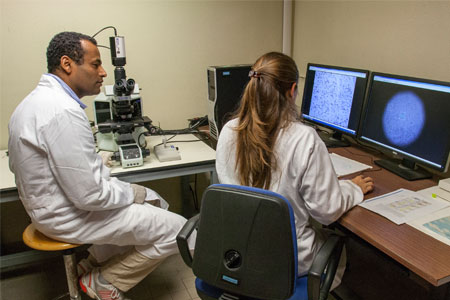- Authors:
-
Pesonel, Elise; Laouénan, Cédric; Guiraud, Laetitia; Bourner, Josephine; Hoffmann, Isabelle; Molino, Diana; Tardivon, Coralie; Bachelet, Delphine; Mentré, France; Amstutz, Alain; Merson, Laura; Rojek, Amanda; Cervantes Gonzalez, Minerva; Antinori, Andrea; Castagna, Antonella; Nozza, Silvia; Pourcher, Valérie; Libois, Agnès; Dunning, Jake; Tacconelli, Evelina; Hites, Maya; De La Calle Prieto, Fernando; Horby, Peter; Yazdanpanah, Yazdan; Calmy, Alexandra; Lescure, F-Xavier; Olliaro, Piero
- Title:
-
Clinical characterisation and outcomes of human clade IIb mpox virus disease - a European multicentre observational cohort study (MOSAIC)
- Year:
-
2025
- Type of item:
-
Articolo in Rivista
- Tipologia ANVUR:
- Articolo su rivista
- Language:
-
Inglese
- Format:
-
Elettronico
- Referee:
-
No
- Name of journal:
- Clinical Infectious Diseases
- ISSN of journal:
- 1058-4838
- N° Volume:
-
Online ahead of print
- Number or Folder:
-
Jan 3
- Page numbers:
-
1-1
- Keyword:
-
Clade IIb; Lesion resolution; Mpox; Observational cohort; viral load
- Short description of contents:
- Background: The global mpox outbreak which started in May 2022 was caused by a novel clade IIb variant of the mpox virus (MPXV). It differed from the traditional Western and Central Africa disease in transmission patterns and clinical presentation. Methods: To address the need for detailed clinical and virologic data, we conducted an observational cohort study (MOSAIC) during May 2022-July 2023 in individuals with confirmed MPXV infection enrolled in six European Countries. Case-management decisions were left to the attending physician. Participants were monitored for up to six months for clinical signs/symptoms and clinical and virologic outcomes through hospital visits, phone interviews, and self-administered questionnaires. Outcomes included time-to-lesion resolution, clinical status, and virus clearance. Results: The 518 participants not receiving any specific treatment ("untreated") were diagnosed a median 5 days from symptom onset; 90% were managed as outpatients. Lesions were mostly cutaneous (88%) as and peri-genital (74%). By Day 14 from the first PCR-positive sample, 39% had resolved lesions. Time-to 95% unculturable virus was longest in cutaneous lesions (52 days). A putative systemic antiviral was available for 57 participants, 44% as in-patients, 34% and 58% had resolved lesions by D14 from the first PCR-positive sample and from treatment start, respectively. Time-to 95% unculturable virus was 60 days in skin and oropharynx. No death or recrudescence occurred by Day 180. Conclusion: MOSAIC provides comprehensive insights into the clinical and virologic characteristics of mpox caused by the clade IIb variant. The study forms the basis of clinical characterisation for ongoing mpox outbreaks.
- Product ID:
-
143800
- Handle IRIS:
-
11562/1149691
- Last Modified:
-
March 30, 2025
- Bibliographic citation:
-
Pesonel, Elise; Laouénan, Cédric; Guiraud, Laetitia; Bourner, Josephine; Hoffmann, Isabelle; Molino, Diana; Tardivon, Coralie; Bachelet, Delphine; Mentré, France; Amstutz, Alain; Merson, Laura; Rojek, Amanda; Cervantes Gonzalez, Minerva; Antinori, Andrea; Castagna, Antonella; Nozza, Silvia; Pourcher, Valérie; Libois, Agnès; Dunning, Jake; Tacconelli, Evelina; Hites, Maya; De La Calle Prieto, Fernando; Horby, Peter; Yazdanpanah, Yazdan; Calmy, Alexandra; Lescure, F-Xavier; Olliaro, Piero,
Clinical characterisation and outcomes of human clade IIb mpox virus disease - a European multicentre observational cohort study (MOSAIC)
«Clinical Infectious Diseases»
, vol.
Online ahead of print
, n.
Jan 3
,
2025
,
pp. 1-1
Consulta la scheda completa presente nel
repository istituzionale della Ricerca di Ateneo 








